A progress update on The Lizard’s Species Recovery Programme-funded project
February 2024
Over the winter period, the focus of our Species Recovery Programme within The Lizard NNR, Back to the Future: restoring threatened metapopulations on the Lizard Peninsula, has been habitat management works. This follows completion of various vegetation, vascular plant, lichen and bryophyte surveys that have been undertaken over the summer and autumn period to help refine our heathland restoration works – excitingly, the lichen survey work included the discovery of Cladonia stereoclada, an internationally rare southern oceanic species new to England!
The habitat management works area being delivered predominantly through three contracts, one for each site: Gew Graze, North Kynance Valley and Lizard Downs (all in West Lizard). This work aims to restore the heathland and coastal grassland to their former glory at a landscape scale, to enable the important habitats and species for which the Lizard is well-known to flourish, ensuring their long-term survival.
These works include:
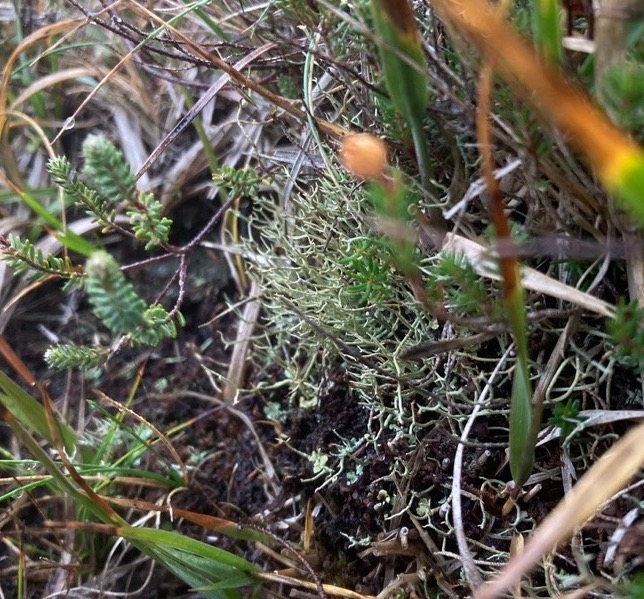
- Vegetation clearance – mainly Blackthorn and Gorse which encroach on the rock outcrops and dominate the river valleys, shading out other species such as Serpentine Solenopsora Solenopsora liparina, a lichen found only on The Lizard.
- Light controlled burns of heathland areas to restore the mix of heathland, grassland, bare ground and rock outcrops. This will increase the diversity of plants, lichens and liverworts, supporting other species such as the Grayling Hipparchia semele and Marsh Fritillary Euphydryas aurinia butterflies. The burning of these areas will be followed by increased cattle and pony grazing.
- Restoration and creation of trackways – these are ancient trackways that criss-cross many areas of heathland and support Mediterranean temporary ponds, which in Britain are only found on The Lizard. These ponds support a number of rare plants including Pigmy Rush Juncus pygmaeus, Pillwort Pilularia globulifera, Three-lobed Crowfoot Ranunculus tripartitus and Yellow Centaury Cicendia filiformis.
- Restoration and creation of pools, many of which have become overgrown and no longer have open water.
- Creating gaps (pinch points) in hedgebanks, allowing cattle and ponies to move across the heathland. Where cattle gather at these gaps, they poach the ground, encouraging the collection of water during the winter period, which in turn supports rare species such as Three-lobed Crowfoot.
These management works are being undertaken during the winter period to minimise disturbance and injury to species, when many are in hibernation or are dormant, and avoids the main bird nesting season. Works have been completed at Gew Graze and are ongoing on Lizard Downs and in North Kynance Valley (as of 26 January 2024).
Sarah Board, Lead Adviser, Lizard Species Recovery Project
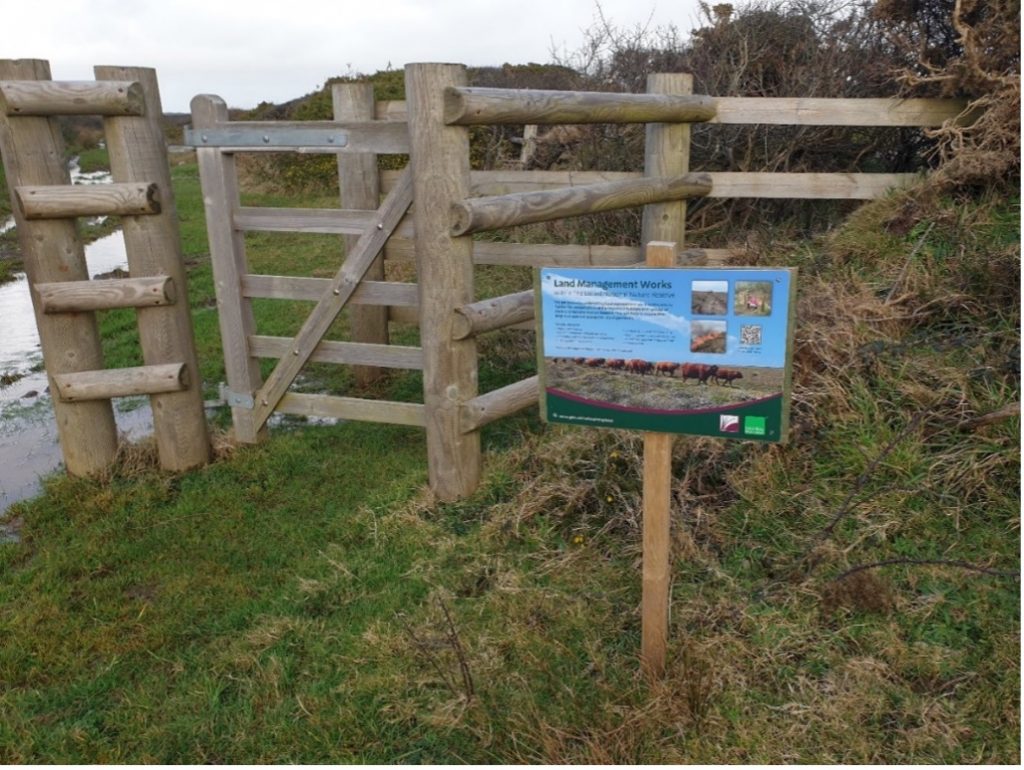
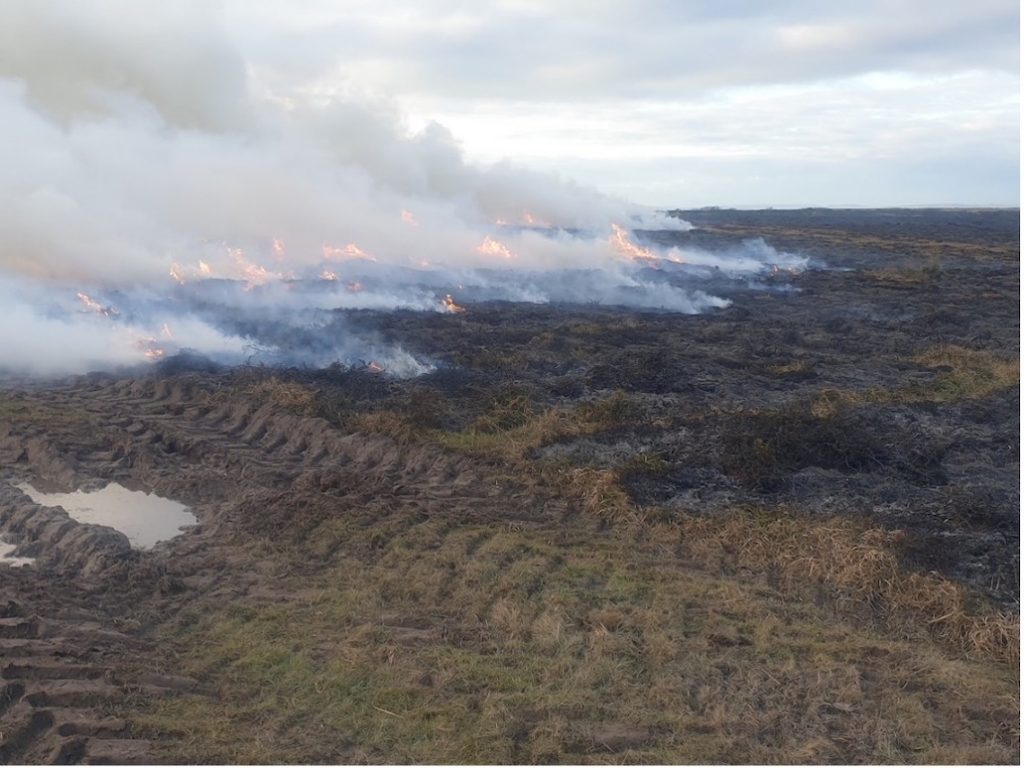
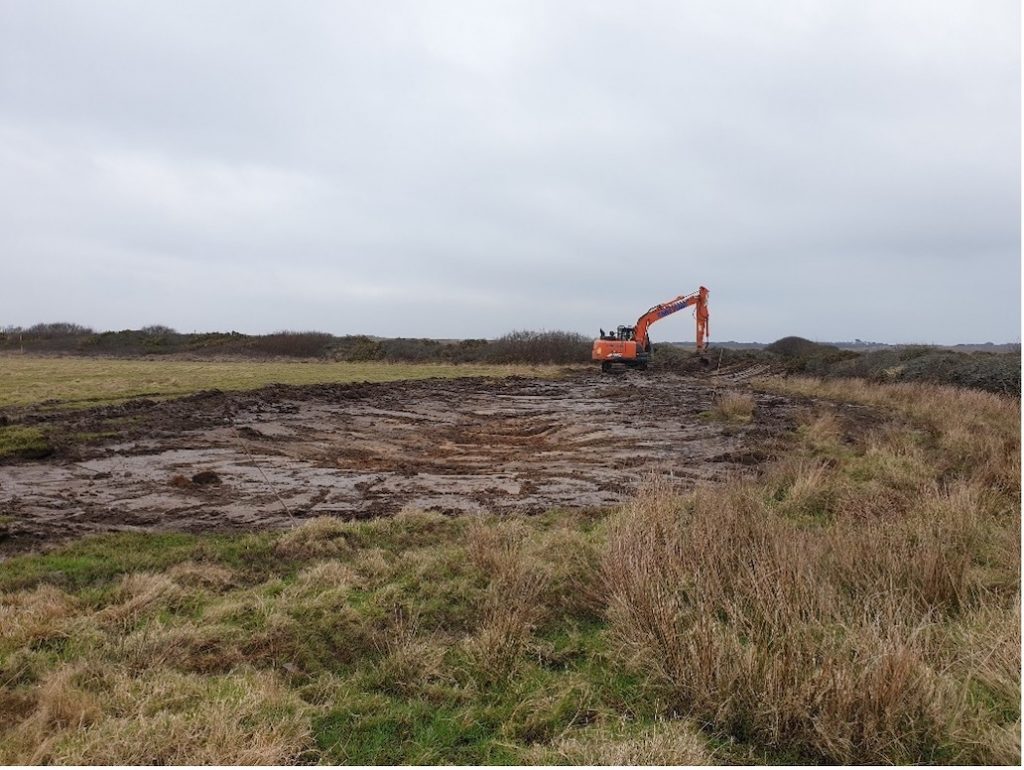
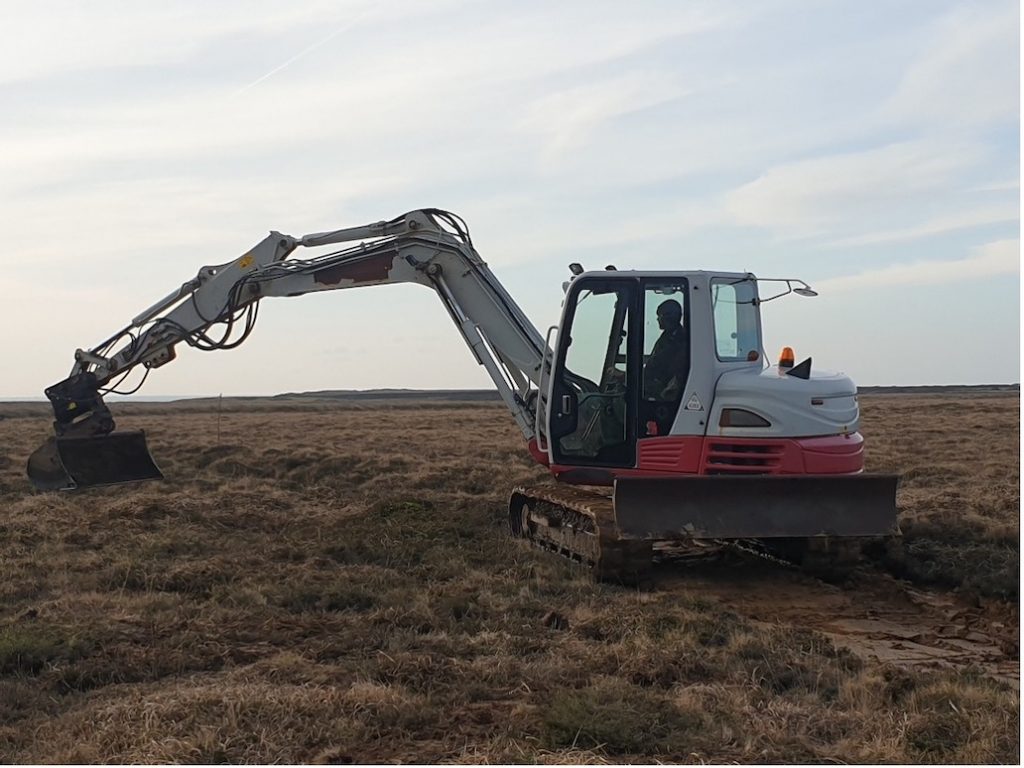
Top row, left to right: signs have been placed at various access points to inform people of the habitat management works being undertaken; one of the controlled heathland burns, here at Gew Graze; creation of a new pond at Kynance Farm.
Bottom: Trackway restoration work begins on Lizard Downs.
